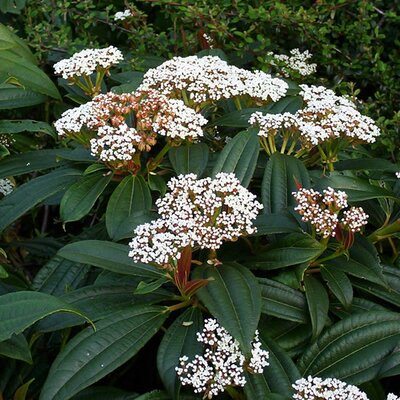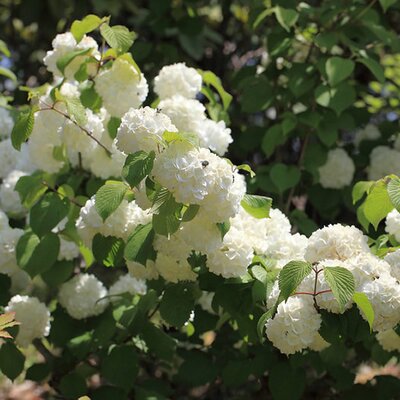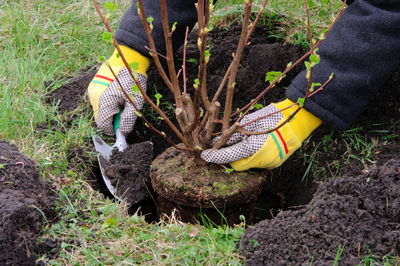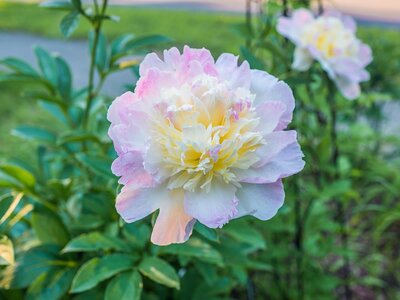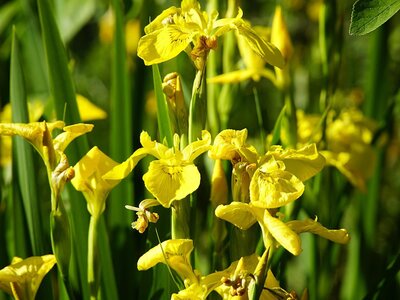Viburnums come as evergreen or deciduous shrubs, are low maintenance and can be great for adding structure to a garden and in some cases can make an attractive, flowering, informal hedge. Flowers are usually borne in clusters, are often fragrant and depending on the variety, are produced from spring to early summer, or from winter into early spring. If two or more of the same species are grown together they will often produce ornamental berries in colours of red, black, blue or pink that are loved by many native bird species.
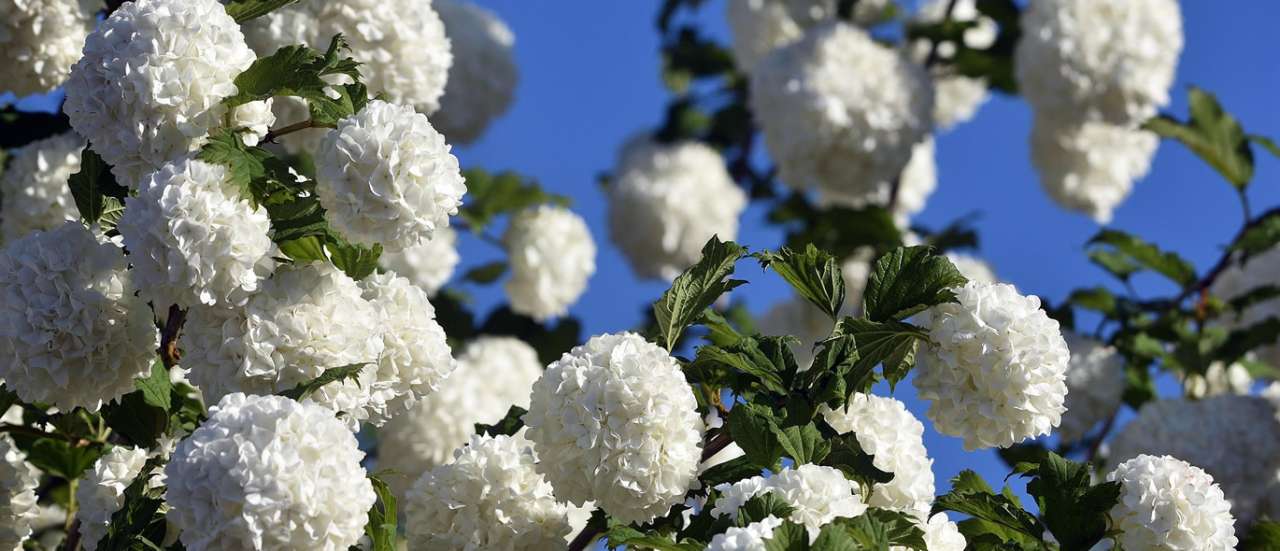 Viburnum opulus - Image by Artur Pawlak from Pixabay
Viburnum opulus - Image by Artur Pawlak from Pixabay
We've listed below some of our favourites:
- Viburnum 'Eve Price' - this is a dense evergreen variety that will flower from winter into spring with white flowers opening from pink buds against an apple green foliage back-drop. Its bushy habit and fairly vigorous growth also make it ideal for an informal hedge that reacts well to pruning.
- Viburnum 'Lisa Rose' - another evergreen variety, similar to 'Eve Price' only the leaves tend to be somewhat larger.
- Viburnum 'Mariesii' - deciduous viburnum with beautiful, white, lace-cap flowers, similar to those of some hydrangeas. The tiered branches give a 'wedding cake' effect to its display with foliage turning shades of red and purple in autumn and black fruit if planted in numbers
- Viburnum 'Davidii' - a spreading evergreen viburnum, with thick, dark green, leathery leaves that provide great ground-cover. Long lasting clusters are produced in spring followed by metallic blue-black berries when cross pollinated
- Viburnum 'Plicatum' - deciduous variety that produces globular clusters of creamy white flowers in late spring similar to those of another favourite, viburnum opulus (Guelder Rose)
Where and How to grow:
Most if not all viburnum will tolerate any soil type as long is it is moist but well-drained and most will be happy in full sun or partial shade,exposed or sheltered sites, making them a versatile shrub for any garden. Most do prefer an open, sunny site though to really thrive.
The likes of 'Eve Price' and 'Lisa Rose' make excellent flowering, informal hedges, with 'Davidii' being able to provide a dense ground cover up to 3ft tall for mixing with larger shrubs and trees. All make great stand-alone plants in a mixed shrub or perennial border with evergreen varieties providing interest all year round and adding structure to your space.
As with most shrubs, they are best planted in spring once the soil has warmed up or in autumn before the frosts kick in. Summer planting is OK but you will need to make sure they are kept well watered in any dry spells until they are established:
- Dig a hole as deep as the pot they are in and about 3 times as wide, loosing up the soil around the hole and digging in some organic matter where the soil is particularly heavy or sandy. This will encourage roots to spread outwards and establish.
- Remove the plant from its pot, loosening any roots that may have become pot-bound (it's always good practice to give the pot a good watering an hour or so beforehand).
- Position the root-ball to the centre of the hole, making sure that the ground is level with the soil level in the pot – be sure not to plant it any deeper. It's often useful to lay a cane across the whole to make sure that the base of the stem is level with the ground surface before back-filling. The roots will also benefit from a dusting of mycorrhizal fungi which will help the plants establish much quicker.
- Once positioned, you can then start to backfill the hole, gently firmly the plant in give it a good watering. It's often a good idea then to add a layer of mulch about 2-3 inches deep around the plant, being sure to leave a good 4 inches clear around the stem so as to prevent any stem rot or fungal infection. The mulch will help retain moisture and suppress weeds while the shrub becomes established.
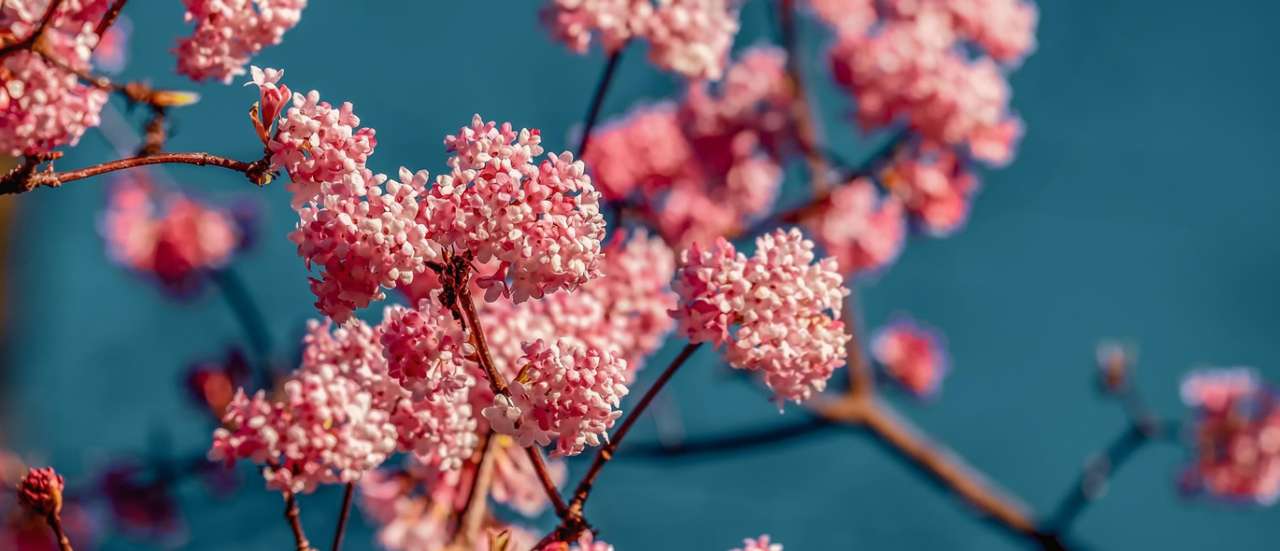 Viburnum Bodnantense - Image by Couleur from Pixabay
Viburnum Bodnantense - Image by Couleur from Pixabay
Viburnum care:
These really are a low maintenance plant and little or no care is really needed once they are established. The likes of Viburnum opulus, burkwoodii or davidii need little or no pruning but can be hard pruned if you want to regenerate them. Viburnum tinus (which includes the likes of 'Eve Price' and 'Lisa Rose') really only need pruning to maintain shape. Viburnum bodnantense and farreri benfit by removing up to a third of old wood from the base after flowering just to keep the vibrant. Viburnums do not really need feeding in most gardens, but will benefit from a sprinkle of blood, fish and bone in early spring with a couple of inches of mulch (being sure to keep any mulch about 4 inches or 10cm clear of the stem).
Propagation: If you wish to propagate viburnums from cuttings then Viburnum tinus, davidii, burkwoodii and opulus can be done through semi ripe cuttings between mid-summer and autumn. Cut a 10-15cm length of non flowering stem, just below a leaf node and strip to just leave two at the top. If the leaves are large you can even cut these in half to prevent too much evaporation. These can then be potted up and placed on a heat matt/propagator until roots have formed and then potted on
Similar softwood cuttings can be taken for deciduous viburnums from late spring to mid summer. Hardwood cuttings can also be taken for Viburnum bonantense, farreri and opulus from late autumn to winter although these will take a lot longer to form roots and probably won't be ready to pot on until the following spring.
If this article has inspired you to add a viburnum to your garden collection then why not browse our selection online or visit one of our stores, where staff will be at hand to offer any further advise.


